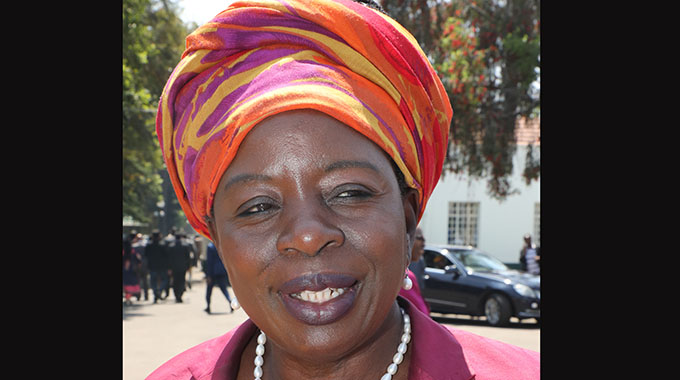EDITORIAL COMMENT: Maintain Covid-19 precautions at full throttle

The outbreaks of Covid-19 at three boarding schools, fortunately without anyone becoming seriously ill, shows up the dangers of complacency and trashes any assumption we make that we can let down our guard.
The schools may have been unlucky, and they may have been lax; probably they were both. And the fact that many scores of boarding schools are still free of infection shows that the systems laid down by the medical experts are working and can continue to work.
Those outbreaks also show how smart was the advice given to Government to keep all boarders at school over the two holiday weekends, Easter and Independence. No school needs someone coming back infected from their family.
But to work, the medical advice must be applied, every hour of every day by every person. We cannot relax and assume that just because we have beaten off two waves of high-level Covid-19 infections we have won.
What our collective efforts did show is that when we all take precautions we can minimise the risks of infection and bring it down to very low levels.
Government, led by President Mnangagwa, showed us over the holiday weekend that they are quite aware of the dangers and recognise that their medical experts know what they are talking about and take their advice.
The very-low key Independence Day celebrations at State House involved a small number of people, with the rest of us watching on television or logging in to an online feed.
And it must be remembered that almost everyone at State House was in the second-phase group for vaccination and being smart people have been vaccinated.
But they still wore their masks; they still kept their distance from each other; they still sanitised their hands as they walked in.
Leaders and their immediate aides know they have to set the example, and they know that so long as there is Covid-19 present in Zimbabwe there is still a risk. Vaccination dramatically reduces the risk, but does not eliminate it.
The three boarding school outbreaks show the need not just for other schools to maintain the systems they have put in place to reduce the risks of infections to as close to zero as possible, but also for others to keep up their good work and not make rash assumptions.
A boarding school is a classic closed community. So if there is laxity, infection will spread. It is basically impossible to prevent a single case coming in from outside. But if everyone is taking precautions it should not spread quickly through a closed community.
By the time the first case is diagnosed, it might be reasonable to assume there are a handful of other cases, but not scores.
This is important when we look at other closed communities: a factory, a mine, a market of informal traders are all obvious examples. While the number of infected people at any one time in Zimbabwe is low, it is almost certain that in any industrial area at least one factory worker is infected.
But if everyone else in that factory is taking the precautions, and if the factory managers are enforcing these and doing the temperature checks and keeping the factory on high alert, it can remain as one.
The World Health Organisation has issued a new warning, expressing concern that as every larger numbers of people are vaccinated, people stop caring as much as they need to care. Even the countries where vaccination programmes have been running longest, with a local manufacturer of vaccines sorting out the supply chain, they are still far from the percentages required for herd immunity.
And there is always that nagging problem that a visitor from a country where vaccination is still in the early stages may be able to sneak in. Covid-19 will not be eradicated until the entire planet is vaccinated, or at least has achieved vaccination levels high enough for herd immunity.
Zimbabweans are rightly impressed by the speed of our vaccination programme. By the end of today, and certainly by the end of tomorrow, we will have achieved more than 300 000 first jabs, although the acceleration in second jabs will not start being seen until the end of this week, four weeks after we stepped up rates of the numbers being given their first jabs.
But we need to remember that 300 000 is just three percent of the 10 million we need as a national minimum to achieve herd immunity.
Admittedly that three percent includes many who are at most risk of becoming infected, and so at most risk of passing on the infection. But the numbers are still too low for effective fire-breaks to be in place.
As we build up vaccinations in higher risk groups we will start seeing more effective fire-breaks long before we achieve the herd immunity we need for eradication.
And those feeling complacent because they have been vaccinated, or are about to be vaccinated, or are about to get their second jab, should look seriously as those nurses giving the jabs.
They still wear their full personal protective equipment for nurses in infectious disease environments: masks, “yellow raincoats”, head coverings, and the like. And these were in the very first groups being vaccinated and by now have all had their second jabs.
Last week, Government announced a further step up in vaccinations, with the Finance Ministry authorised to pay for another five million doses. We assume that because we are serious about our national programme, have already used or committed all the generous gifts we have received from China and are well into our first major and paid-for commercial order, that our Chinese suppliers will continue to divert and sell the trickle a little country like Zimbabwe needs from their daily production.
By the look of it we have lucked out by starting off with the inactive vaccines, built on killed Covid-19 viruses, rather than waiting for the fancier live vaccines. Because the jab with the dead vaccine introduces no living matter or poison into the vaccinated person, there are no side-effects and no complications.
Our bodies simply produce the anti-bodies against Covid-19 and remember how to make them. They are regarded as easily the safest. Their effectiveness is of the same order as the live vaccines, and that was the only potential downside of a dead vaccine.
The problems already recorded in other countries come from two live vaccines, although at very low levels, and show that these are not always the most obvious solutions.
Such vaccines use a viral vector, another virus that tests have found to be harmless, and genetically engineer it to include a segment of the Covid-19 RNA that generates one of the many corona spikes on that harmless virus, so the antibodies generated can grab and kill a Covid-19 virus.
But you are injected with a living organism, and with the three vaccines now in Zimbabwe you are not. India produces both kinds, but the Indian vaccine gift was the dead one. So we can step up our programme without any delays.










Comments